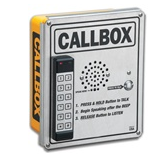 When it comes to the wireless equipment, there are now two main types of equipment available based on the frequency levels at which they operate. These two frequencies are the UHF and the MURS frequencies. Both the frequencies have their own set of pros and cons.
When it comes to the wireless equipment, there are now two main types of equipment available based on the frequency levels at which they operate. These two frequencies are the UHF and the MURS frequencies. Both the frequencies have their own set of pros and cons.
Wireless intercoms that operate using UHF have the ability to effectively penetrate land barriers that come in between the signals such as multi story buildings, compound walls and ceilings. UHF wireless systems have the capability to work with existing UHF radio transmitters. There is no need to set up a new transmitter infrastructure. These wireless intercoms have the capability to travel longer distances than the other form of wireless intercoms.
One of the main disadvantages in using a wireless intercom in the UHF frequency is overcrowding. A lot of members have already subscribed for this frequency and hence the traffic density is heavy. Another disadvantage of using UHF wireless intercom is that it requires an original license to be operated. This adds to the cost of acquiring the device.
When compared to UHF-based intercoms, MURS-based systems are still fewer in numbers. This is both in terms of how many people are using the systems, and how many different MURS systems are out there on the market. However, this is rapidly changing as MURS, in the scheme of things, is relatively new, but should ultimately be cheaper for manufacturers and the end user. This type of intercom doesn’t require a license. So the cost of acquiring the MURS based system is comparatively less than UHF systems.
On the negative, the power used in MURS intercoms is limited to 2 watts. It has lower building and wall penetration capability when compared to a UHF device. It would not be able to penetrate barriers such as metal walls without the usage of external antennae. With the help of an external antenna, MURS wireless telecom does have the capability to break barriers such as steel and metal walls. These external antennae would be come in handy in an outdoor environment where there are a larger number of skyscrapers in the vicinity.
For most small businesses, MURS systems will be cheaper to purchase, and simpler to setup. They will probably not need the extra power the UHF brings, and if they purchase from a reputable seller they will be able to test in place, exchanging for a UHF system if needs be.
